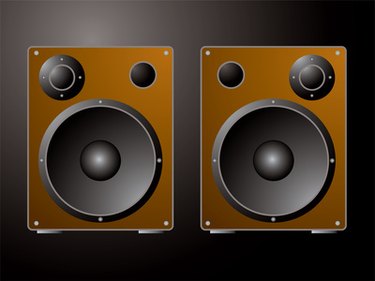
Speakers translate the digital signals sent from an audio device into audible noise. Occasionally a speaker can malfunction, due to a variety of reasons, resulting in a signal that cuts in and out. Troubleshooting such a problem requires a user to examine the connections as well as the power of the speakers.
Poorly Connected Wire
Video of the Day
If the wire is not making a clean and unobstructed connection with both the speaker and the audio receiver then that sound can cut in and out. The wires must be making full contact with the terminals and fitting snugly inside their respective connection points.
Video of the Day
Dirty Wires
If any debris catches onto the exposed section of the wire it can obstruct the electrical flow and likewise the sound. This is rarely an unfixable problem with the wires, and a few swabs with a cotton ball soaked in rubbing alcohol over the exposed parts of the wire should be able to clear off the dirt.
Wire Gauges
The gauge of a wire is the measurement of how much power can flow across the wire at a time. The general rule to follow is speakers that are less than 80 feet away from the audio source should use 16-gauge wire. Any speaker farther away should use at least 14-gauge wire. If the gauge is incorrect for the distance the signal can be weak when reaching the speaker causing audio problems.
Aging Components
As electronic devices age over time, some of their components can burn out or decrease in effectiveness. This is more likely to be a problem with the audio receiver than the speakers themselves.